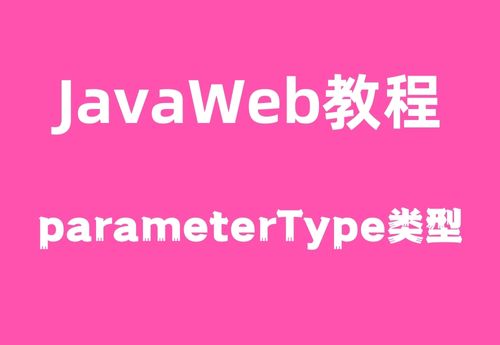在MyBatis映射接口的配置中,有select、insert、update、delete等元素都提到了parameterType的用法,parameterType为输入参数,在配置的时候,配置相应的输入参数类型即可。那么MyBatis parameterType传入参数类型有哪些?parameterType有基本数据类型和复杂的数据类型配置。

1、MyBatis的传入参数parameterType类型分两种
1. 1 基本数据类型:int、string、long、Date;
1. 2 复杂数据类型:类(JavaBean、Integer等)和Map
2、如何获取参数中的值?
2.1 基本数据类型:#{参数} 获取参数中的值
2.2 复杂数据类型:#{属性名} ,map中则是#{key}
3、案例
3.1 传入Long型
mapper接口代码:
1 | public User findUserById(Long id); |
xml代码:
1 2 3 | <select id="findUserById" parameterType="java.lang.Long" resultType="User"> select * from user where id = #{id}; </select> |
3.2 传入List
mapper接口代码:
1 | public List<User> findUserListByIdList(List<Long> idList); |
xml代码:
1 2 3 4 5 6 7 8 9 10 | <select id="findUserListByIdList" parameterType="java.util.ArrayList" resultType="User"> select * from user user <where> user.ID in ( <foreach collection="list" item="id" index="index" separator=","> #{id} </foreach> ) </where> </select> |
在使用foreach的时候最关键的也是最容易出错的就是collection属性。
该属性是必须指定的,但是在不同情况 下,该属性的值是不一样的,主要有一下3种情况:
如果传入的是单参数且参数类型是一个List的时候,collection属性值为list
如果传入的是单参数且参数类型是一个array数组的时候,collection的属性值为array
如果传入的参数是多个的时候,我们就需要把它们封装成一个Map了,当然单参数也可
3.3 传入数组
mapper接口代码:
1 | public List<User> findUserListByIdList(int[] ids); |
xml代码:
1 2 3 4 5 6 7 8 9 10 | <select id="findUserListByIdList" parameterType="java.util.HashList" resultType="User"> select * from user user <where> user.ID in ( <foreach collection="array" item="id" index="index" separator=","> #{id} </foreach> ) </where> </select> |
3.4 传入map
mapper接口代码:
1 | public boolean exists(Map<String, Object> map); |
xml代码:
1 2 3 4 5 6 7 8 9 10 11 12 13 14 15 16 17 18 | <select id="exists" parameterType="java.util.HashMap" resultType="java.lang.Integer"> SELECT COUNT(*) FROM USER user <where> <if test="code != null"> and user.CODE = #{code} </if> <if test="id != null"> and user.ID = #{id} </if> <if test="idList !=null "> and user.ID in ( <foreach collection="idList" item="id" index="index" separator=","> #{id} </foreach> ) </if> </where> </select> |
MAP中有list或array时,foreach中的collection必须是具体list或array的变量名。
比如这里MAP含有一个名为idList的list,所以MAP中用idList取值,这点和单独传list或array时不太一样。
3.5 传入JAVA对象
mapper接口代码:
1 | public int findUserList(User user); |
xml代码:
1 2 3 4 5 6 7 8 9 10 11 12 13 14 15 16 17 18 | <select id="findUserList" parameterType="User" resultType="java.lang.Integer"> SELECT COUNT(*) FROM USER user <where> <if test="code != null"> and user.CODE = #{code} </if> <if test="id != null"> and user.ID = #{id} </if> <if test="idList !=null "> and user.ID in ( <foreach collection="idList" item="id" index="index" separator=","> #{id} </foreach> ) </if> </where> </select> |
JAVA对象中有list或array时,foreach中的collection必须是具体list或array的变量名。
比如这里User含有一个名为idList的list,所以User中用idList取值,这点和单独传list或array时不太一样。
3.6 注解@Param
例子1:
注解单一属性;这个类似于将参数重命名了一次
mapper接口代码:
1 | List<User> selectUserByTime(@Param(value="startdate")String startDate); |
xml代码:
1 2 3 4 | <select id="selectUserByTime" resultType="User" parameterType="java.lang.String"> select * from t_user where create_time >= to_date(#{startdate,jdbcType=VARCHAR},'YYYY-MM-DD') </select> |
例子2:
注解JavaBean
mapper接口代码:
1 | List<User> selectUserByTime(@Param(value="dateVO")DateVO dateVO); |
xml代码:
1 2 3 4 5 6 | <select id="selectUserByTime" resultType="User" parameterType="DateVO"> select * from t_user where create_time >= to_date(#{dateVO.startDate,jdbcType=VARCHAR},'YYYY-MM-DD') and create_time < to_date(#{dateVO.endDate,jdbcType=VARCHAR},'YYYY-MM-DD') </select> |